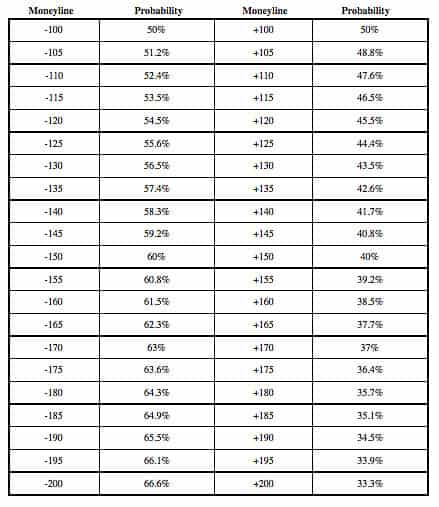

The expected value of a call is determined by comparing the pot odds to the odds of drawing a card that wins the pot. When a player holds a drawing hand (a hand that is behind now but is likely to win if a certain card is drawn) pot odds are used to determine the expected value of that hand when the player is faced with a bet. Using pot odds to determine expected value For example, to convert 25%, or 1/4, 1 is subtracted from 4 to get 3 (or 25 from 100 to get 75) and then 3 is divided by 1 (or 75 by 25), giving 3, or 3:1. To convert any percentage or fraction to the equivalent odds, the numerator is subtracted from the denominator and then this difference is divided by the numerator. To get the percentage, 30 and 10 are added to get a sum of 40 and then 10 is divided by 40, giving 0.25, or 25%. The pot odds in this situation are 30:10, or 3:1 when simplified. For example, the pot is $30, and the cost of the call is $10. To convert this ratio to the equivalent percentage, these two numbers are added together and the cost of the call is divided by this sum. The ratio has two numbers: the size of the pot and the cost of the call. Odds are most commonly expressed as ratios, but converting them to percentages often make them easier to work with. Converting odds ratios to and from percentages A change in which a team is favored can always happen and greatly affect an early bet. There are many ways the game and odds will change over time. Betting on esports is very similar to betting on traditional sports, so the odds are bound to change over time. The most comprehensive and reliable bet calculator.

Calculate bet returns for Accumulators, Lucky 15's, Doubles, Trebles, Football, Horse Racing and more. Pot odds are often compared to the probability of winning a hand with a future card in order to estimate the call's expected value. In poker, pot odds are the ratio of the current size of the pot to the cost of a contemplated call.


 0 kommentar(er)
0 kommentar(er)
